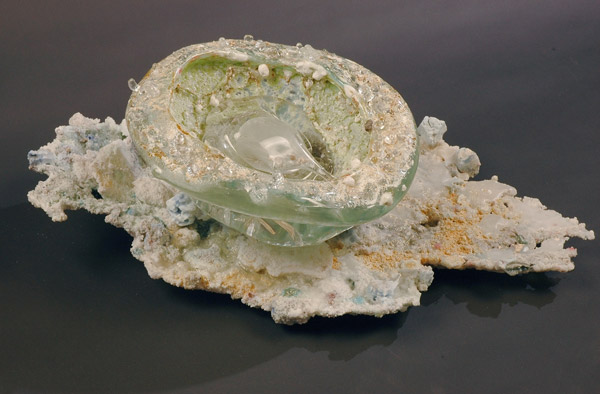
PROCESSES:
Blown Glass with Ceramic Glazes:
During the blowing process, dried ceramic glazes are poured into the
hot glass vessel.
As they are heated, they start to fuse, melt, and crystallize. The work
is an invented geology determined by the thermal reactivity.
Fume Blown Worlds:
(Black or clear orb formations found inside of vessels or as part of
installations)
Molten glass is layered on top of ceramic salts.
The heat from the glass causes the trapped chemicals to fume and a gas.
The expanding gas provides enough pressure to blow a bubble. The
resulting form is a spherical object with rocky debris inside.
The interior wall of an enclosed piece becomes fumed with carbon,
creating a smoky metallic surface.
Open forms allow the carbon to escape and leave a sparkling residue on
the inner shell.
Glory Hole Floors and
Planetary Landscapes:
During the blowing process, chemicals are funneled into a hot glass
vessel. Spinning and dripping materials encrust the artwork. Excess
matter will spill onto the glory hole floor. The sand foundation
absorbs these geological remains and they become thermally bonded. The
fused sand ground is harvested and used as a nest for the vessels.
Finished works are united with the environment from which they were
born.
Ceramic Calcite Formations:
Calcite Formations are grown onto a ceramic skeletal form during the
kiln firing.
As the glazes bubble and flow, the heat is controlled to maximize the
amount of deposits.
Finished works are harvested from the kiln and retain the floor bricks
upon which they grew.
The works capture the movement of the glaze, the melting process, and
cave floor formation.
